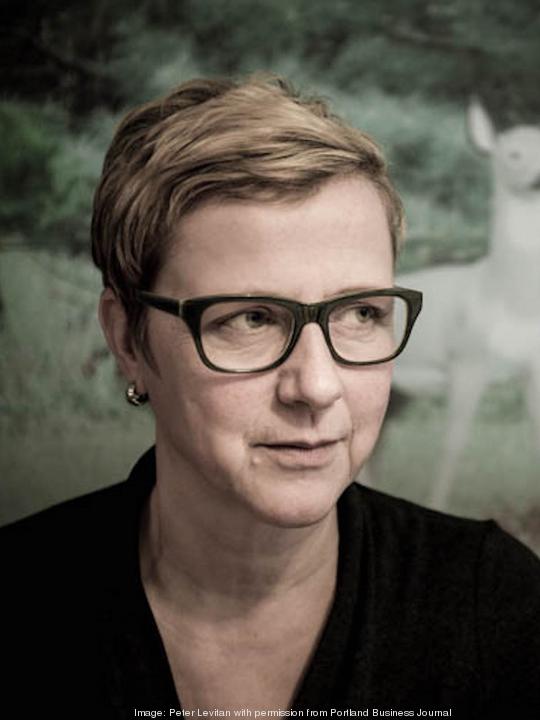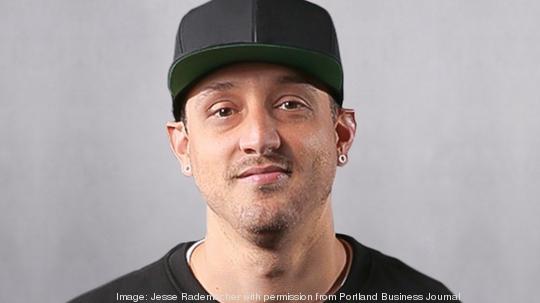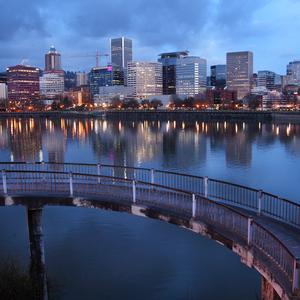The price tags can be staggering.
A collage showcasing hundreds of unique designs sold at an online auction for just over $69 million last March. The same month, three pairs of Nike sneakers sold for more than $3 million in minutes. A photo of an ape wearing a hat and gold chains could go for several million dollars.
These items are not physical works of art or shoes you can hold, or even wear on your feet. They are digital assets called non-fungible tokens, or NFTs. They exist solely in a digital cloud called a blockchain, which is part of an emerging area of the internet called web3.
Now before your eyes glaze over, know that there is real opportunity for Oregon companies in what was once an obscure corner of the digital universe. The eye-popping prices in recent auctions have catapulted NFTs into the mainstream. But there is much more to the NFT universe than the buying and selling of digital artifacts.
There are concrete business opportunities for which Oregon is well-positioned to benefit. NFTs offer marketing opportunities for consumer-facing brands. Nike and Adidas are already in the game, but the upside could be even greater for small and mid-sized consumer product companies with modest budgets to build brand awareness.
And then there is the technological expertise that can advance web3, which is at its core the next iteration of the internet, where virtual assets are minted, bought and sold.
As with most any evolving sector, there are risks. They are especially acute for consumer-facing brands, which will dive into an unregulated, energy-guzzling industry that's difficult to monitor.
Untangling NFTs
An NFT is a unique digital work of art with a specific ownership code that acts like a certificate of authenticity. Only one person can own that work of art or design, and a code for who owns it is stored on a virtual ledger called a blockchain that anyone can view.
NFTs can only be minted, bid on, purchased and exchanged on dedicated blockchains with certain cryptocurrencies. The most common blockchain used for NFTs is Ethereum. Its cryptocurrency is Ether.
These blockchains are not some kind of deep web experience: Ethereum can be found with a simple Google search and within minutes, you can exchange physical currency for Ether to buy an NFT of your own.
All of this takes place on web3, where users are encouraged to engage with one another in a regulation-free environment. Many users network using pseudonyms, so their data and information remains private.
Nike and Adidas come to play
Two of Oregon’s most high-profile consumer-facing brands have raced into the NFT game.
When Nike collaborated with Seattle artist Fewocious, creating physical sneakers that corresponded to digital tokens, the company tallied more than $3 million in digital sneaker sales in minutes. In December, Nike took its NFT involvement a step further with the purchase of RTFKT Studios, which creates virtual sneakers and collectibles among other work.
“This acquisition is another step that accelerates Nike’s digital transformation and allows us to serve athletes and creators at the intersection of sport, creativity, gaming and culture,” Nike CEO John Donahoe said in the statement announcing the deal.
Nike rival Adidas also sees promise in NFTs. Adidas recently partnered with Prada and digital artist Zach Lieberman for its second NFT project called Adidas for Prada Re-source. This project solicited unique photographs from contributors, 3,000 of which were selected to compose a larger, patchwork-style NFT designed by Lieberman. That final NFT sold for 30 Ether, or almost $80,000.
It is unclear how much Adidas made off the final NFT, but the company said a majority of the sales went to Slow Factory, a nonprofit that works on inclusivity issues, while “a percentage” of the auction sale will go back to the original contributors each time it is sold.
It's worth noting that not every NFT sale results in a windfall. A recent study found a majority of NFTs sell for less than $15, and less than 1% sell for more than $1,500.
That's not to say the promise of a big ticket sale isn't a huge draw for companies investing in NFT projects. But as significant is the possibility of connecting a brand to cutting-edge technology and winning new fans among the often young, savvy consumers who are creating, buying and selling digital assets, said Rebecca Armstrong, CEO of Portland-based advertising agency North.

"As advertisers, there are a number of human proclivities that we tap into to help folks jump from considering products or services to actually buying something. One of them is scarcity bias, which is the perceived notion that a product or service is in limited supply, is special in some way and has extra value," Armstrong said. "So to be able to say at the point of purchase, ‘Hey, we've got this really cool thing, it's a limited edition feature of this brand,’ would push people over the edge into a purchase, or even beyond purchase, keeping them loyal to the brand.”
Oregon opportunities
Brands don’t need access to an Adidas- or Nike-sized marketing budget to benefit from NFTs.
“For smaller brands, it could be an opportunity to go viral and create some unique experiences," said Skip Newberry, president of the Technology Association of Oregon.
Armstrong agreed there is potential for unique Oregon brands to complement their tried and true marketing strategies with NFTs. She used North client Deschutes Brewery as an example of a company that could edge into the NFT space.
“(Deschutes) every year produces limited edition beers, specific seasonals that you can only get at a certain time. And it has made it even better by making the labels into really beautiful pieces of art, so it's not just any desirable limited time beer, it's a desirable piece of branding on the bottle, too,” Armstrong said.
Deschutes could partner with an NFT artist to create limited edition digital label designs and sell them on a marketplace. The buyers get a unique work of art and Deschutes generates some revenue and its brand gets exposure to a potentially new group of consumers.
Consumer brands aren't the only Oregon companies that could find promise in NFTs. There’s also potential for Oregon technology firms and entrepreneurs to plant a flag in the NFT and web3 universe.
Oregon’s tech talent pool runs deep. That combined with the deeply rooted spirit of entrepreneurism could be the building blocks for a new wave of startups focused on NFT design and web3 infrastructure.
“There's no reason why (Oregonians) couldn't contribute to the formation of some interesting startups and even later-stage companies that are interested in having teams here,” Newberry said. “From a business model standpoint, much like any startup, it depends on (if) you have the luck and timing of being in the environment where a person who's figured out a new approach…decides to build something.”
Jesse Rademacher combined his expertise in footwear design with a desire to co-create an open source-style design collaborative. After a decade as an Adidas designer, Rademacher in 2020 launched Madeium, a creative co-op where web3 digital designers can ditch the middle man of corporations and freely design.

Based in Portland, Madeium has about 20 employees. It works with about 300 contract designers, many that Rademacher said he recruited from corporate jobs, who work on NFT and web3 projects. Rademacher said designers are paid a base salary that is equitable and sustainable, allowing them to focus on the thing they do best: create.
“We're trying to raise the designer who, right now, is really underutilized in this system because businesses don't know how to utilize them,” Rademacher said.
Buyer beware
Whether you’re a buyer of NFTs or a brand interested in utilizing digital assets, there are risks.
Even though an NFT cannot technically be stolen because ownership is listed on the blockchain, there are instances where screenshots of designs have been resold.
Recently OpenSea, one of the largest online NFT markets, was targeted in a phishing hack which resulted in upwards of $1.7 million in stolen digital assets, according to the company’s CEO.
A more pressing and relevant issue for Oregon brands, though, is the risk of associating with a technology whose energy usage is an environmental nightmare. A single Ethereum transaction uses as much energy as an average U.S. household over nearly nine days.
“One area that companies really need to take a look at is how important CO2 impacts (are to them), and that there are variations depending on the type of platform that they're looking at or blockchain technology that they're going to be using,” Newberry said.

The lack of regulation on web3 is another consideration. Because web3 inherently acts without overhead governance, company control over a program is often lost quickly after it launches, Newberry said.
“There have also been issues of harassment in some of these online experiences, so what are the protocols, what are the standards? And is there recourse to correct any of that?” Newberry said. “How do these experiences get done in a way where they're more entertaining, engaging and efficient than what's available on web2? And then what are some of the ways in which we can make the experience better than what someone might encounter, say, in the real world?”
There are many unanswered questions, but there are also rewards for companies that are early movers in this emerging field.
"The barrier to entry isn't necessarily massive," Newberry said, "and it's early (in the NFT game)."



